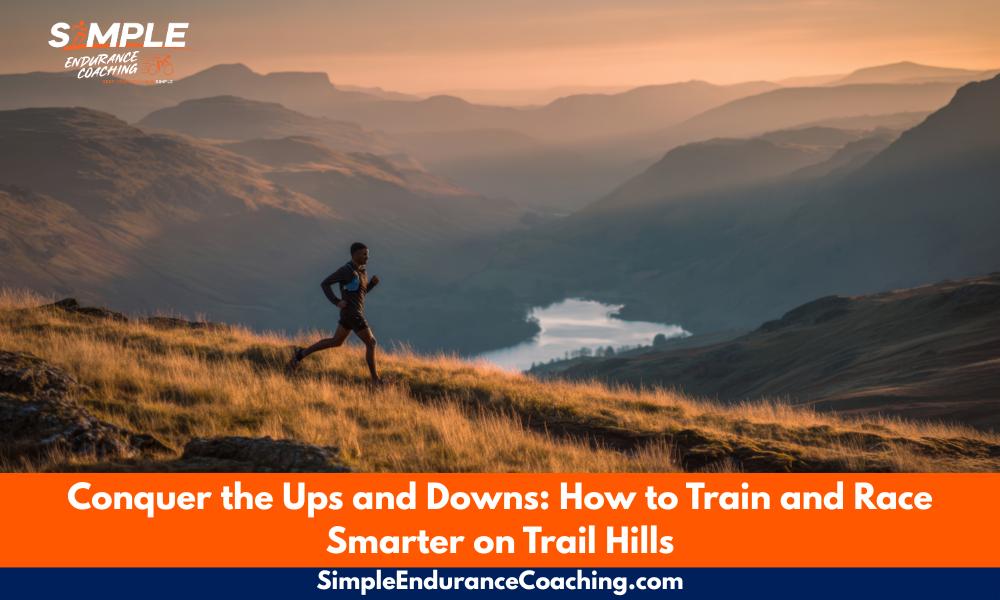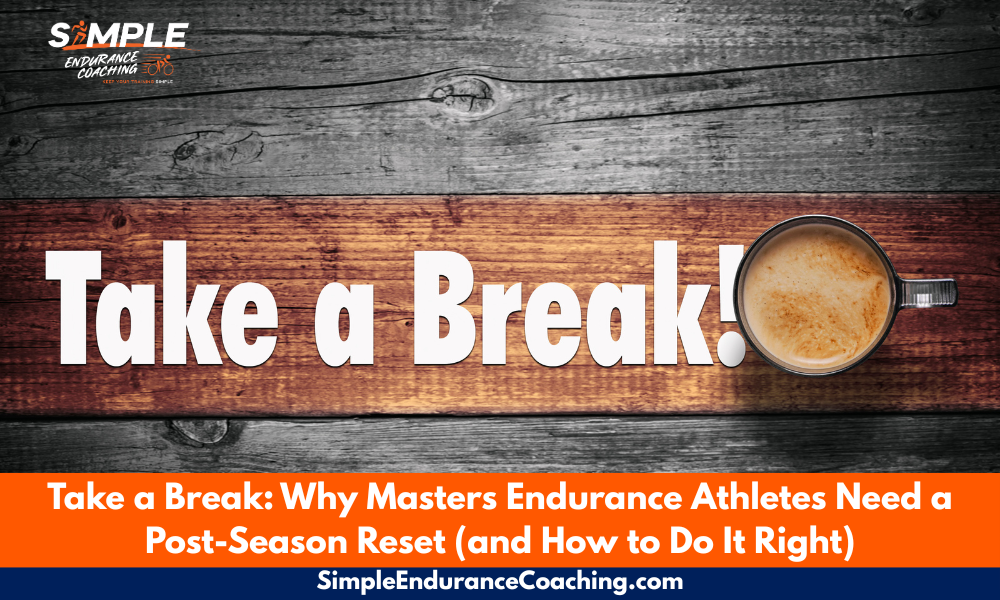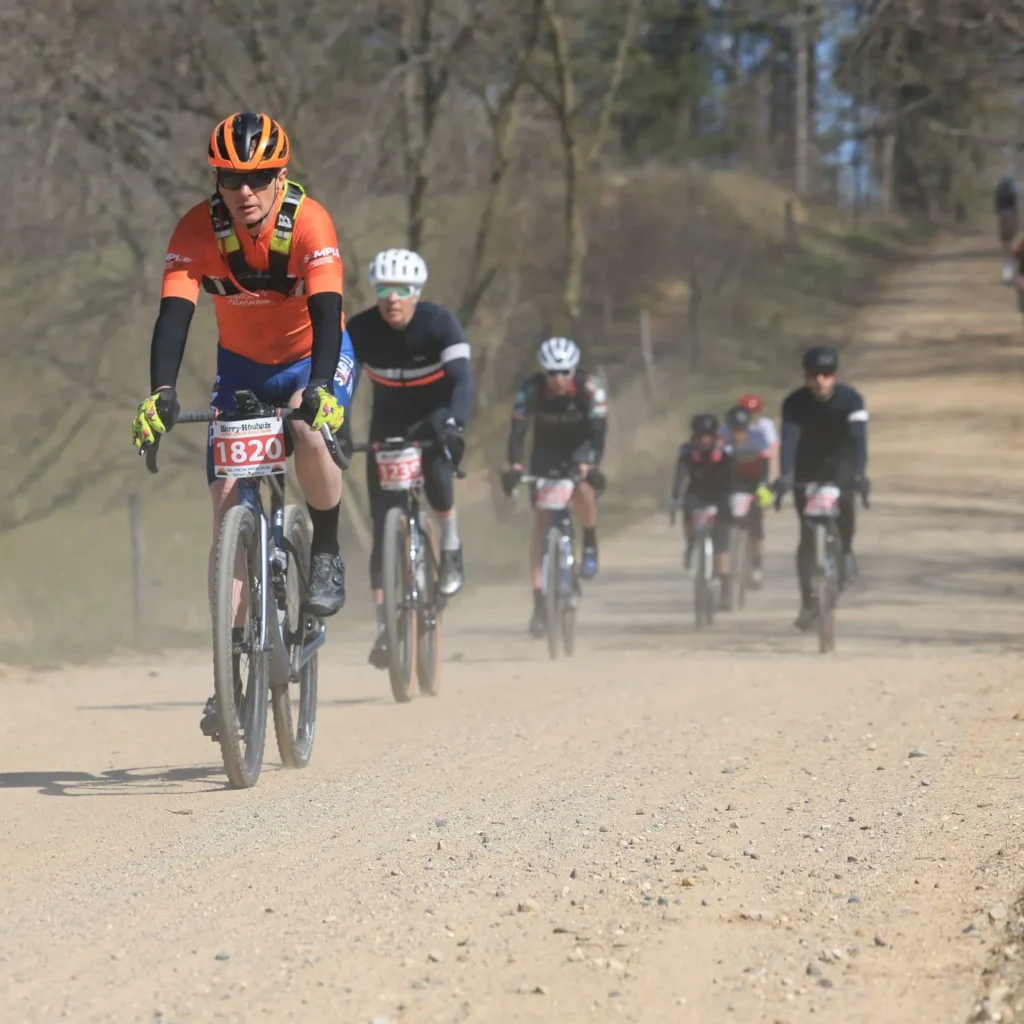I headed to the Hungry Bear gravel race in Cable, WI, hopeful.
Training had been going well, my legs felt strong, and the early-season races had gone off without a hitch.
But just 20 minutes into the race, the familiar signs of ventricular tachycardia returned.
My heart rate spiked to 204 bpm, and just like that, the comeback hit a wall.
This spring, as part of the Heart and Gravel Comeback Tour, I’ve been using the Athletica training platform to rebuild my endurance and performance after two heart procedures.
I’ve raced well, felt stronger, and believed the worst was behind me.
Hungry Bear was a hard reminder that recovery isn’t always linear.

Training with Athletica: The Engine Behind the Comeback
I’ve been training with Athletica, an AI-powered platform that adapts each week based on your performance, recovery needs, and goals.
After my second ablation last fall, I was finally able to train consistently—and Athletica became my guide back to form.
One of my favorite tools is Workout Reserve, which gauges how hard I’m pushing by comparing current efforts to past benchmarks.
It’s been especially helpful in pacing and preventing overtraining.
A typical week looks like this:
- Monday: Recovery ride + strength
- Tuesday: 30/30s for aerobic intensity
- Wednesday: Strength endurance (big gear tempo)
- Thursday: Endurance ride + strength
- Friday: Rest or threshold efforts
- Saturday: Long ride
- Sunday: Sweet spot or tempo within a long ride
As racing season kicked in, the plan scaled back threshold and high-intensity work, ensuring I stayed fresh for race weekends.
Race Recap: 1904 Gravel Race – Strength Returns
The 1904 in Illinois was a highlight.
After hearing about chunky gravel on the long course, I opted for the 45-mile race—and had a blast.
Challenging climbs along the Mississippi kept it interesting, and I felt strong the whole way.
I even took the unofficial win in the 60+ category (hey, if it’s not official, I’ll still count it!).
Aside from one gravel-hating local waving a stick and yelling at us to “get back on the pavement,” it was a smooth and satisfying day on the bike.
Tuning Up for Hungry Bear
Post-1904, the Athletica plan added intensity—three sets of 30/30s—and I was feeling solid.
Even when I tacked on an easy ride on a beautiful Sunday (a planned rest day), the platform adjusted the following week accordingly.
That’s one of its best features: flexibility without guesswork.
Race Recap: Hungry Bear – When the Heart Speaks
Hungry Bear started with promise.
We rolled out under clear skies for the 62-mile “Snacking Bear,” and I felt ready to test myself.
But early on, something felt off—like I couldn’t catch my breath.
My HR monitor flashed 204 bpm.
I knew immediately: VT was back.
I slowed down, took deep breaths, and waited for it to settle.
It took 20 long minutes.
The rest of the race was a struggle.
I rode with a decent group until the final third, where my power and pace dropped.
Reviewing my data later, I saw my HR had spiked again for nearly 90 minutes.
So now it’s back to the cardiologist.
Disappointing? Absolutely.
But the story doesn’t end here.
Riding for a Cause: Kids with Bigger Battles
This isn’t just about my comeback.
I’m riding to raise money for pediatric heart care at Children’s Hospital of Wisconsin, where kids face far more serious challenges than mine.
We’ve already raised nearly $1,600!
Milestones have included:
- 🎀 A tutu ride after hitting $750
- 🎉 A silly string ambush at $1,000
- 💪 16 push-ups at the Hungry Bear finish line after $1,500
If you’re moved to help, your support directly benefits kids and families receiving lifesaving care.
Final Thoughts: The Journey Continues
Racing again after heart surgery is a gift.
And while the setback at Hungry Bear is hard, it doesn’t erase the progress—or the purpose.
Thanks to Athletica, my community, and the cause I’m riding for, this journey remains one of hope, persistence, and unfinished business.
Three Things to Know About Adaptive Training and the Comeback Tour
1. Structured, adaptive training works—especially during a comeback. Following the Athletica plan helped me rebuild endurance and race effectively after serious heart procedures by adjusting to my performance and recovery.
2. Racing is about more than results—it’s about purpose. I’m using gravel racing comeback to raise funds and awareness for pediatric heart care, turning personal recovery into a larger mission.
3. Progress isn’t always linear, but consistency pays off. From modified intervals to adjusting recovery based on feel, my training and racing reflect how small, steady efforts lead to big gains over time.
Need more?
Unlock the secrets to mastering gravel racing with my FREE 24-page Guide to Gravel Racing! Get yours here.
SIGN UP FOR A FREE Virtual Coffee so we can discuss your goals, ask questions, and talk about making your endurance training more effective, fun, and Simple.
Paul Warloski is a:
- USA Cycling Level 1 Advanced Certified Coach
- RRCA Running Coach
- Training Peaks Level 2 Coach
- RYT-200 Yoga Instructor
- Certified Personal Trainer




